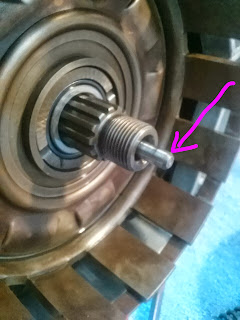I busted this threaded hole in the clutch hub a long time ago. Its in an earlier post.
Replacement from ebay.
Cleaning clutch plate. Exciting, no?
Clutch plates. I'm staying with the old ones.
The other end of the clutch push rod sticking out of the clutch housing.
This washer needs to be put on a certain way because its curved. I think its stamped/labeled on one side. Just follow the manual!
Behold the clutch tool! Another ebay purchase. Trying to do this without this tool is how I broke the first hub. I let the tool press against the bench top when torqueing so I don't have to hold it at the same time.
Finishing touches. You can see the plate edges stacked inside and the clutch springs are under the bolts.
I applied a little engine oil to the gasket first. Some people do this (or use grease) to keep the gasket from sticking to the surfaces. Supposedly you won't have to scrape next time the covers come off.










































